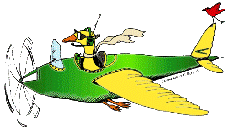Bird Strike Committee Proceedings
Date of this Version
October 2002
Document Type
Article
Abstract
Problems caused by birds in the agricultural, horticultural, recreational and the aviation industries are escalating world wide as man develops environments that are attractive to birds. Chemical repellents, bird scarers, and exclusion netting are being used to keep birds away by taste, fright and containment. Habitat management using grasses with selected endophytes may be a new tool for minimizing bird nuisance problems in these industries. Canada geese (Branta Canadensis) were offered selected ryegrass/endophyte Neotyphodium lolli seed and herbage to examine the effects of known endophyte alkaloids on their feeding behavior in 2000-2001. Forty geese were captured annually, contained in fenced areas by wing clipping and fed entophyte-free herbage and seed for a 3-week period prior to starting any treatments. In a choice 60;cafeteria61; and no choice feeding trial, geese consumed 30% less herbage containing the selected endophyte than the endophyte-free ryegrass herbage. In a seed feeding trial, the geese did not discriminate on first exposure between the endophyte-free seed and that containing the selected endophytes. However, on day two there was an 80% rejection of the seed containing the selected ryegrass/endophyte compared to the endophyte-free seed. The same rejection of 80% was observed after a 3-month endophyte-free feeding period, suggesting the rejection was a long-term, learned response or post-digestion feedback. The authors suggest continued research into this area will be of benefit in producing a living deterrent to birds by habitat modification. Learned-behavior response has been well documented in the past as the way forward. Farming grass/endophyte associations may add to mankind’s armory of bird-control methodology.


